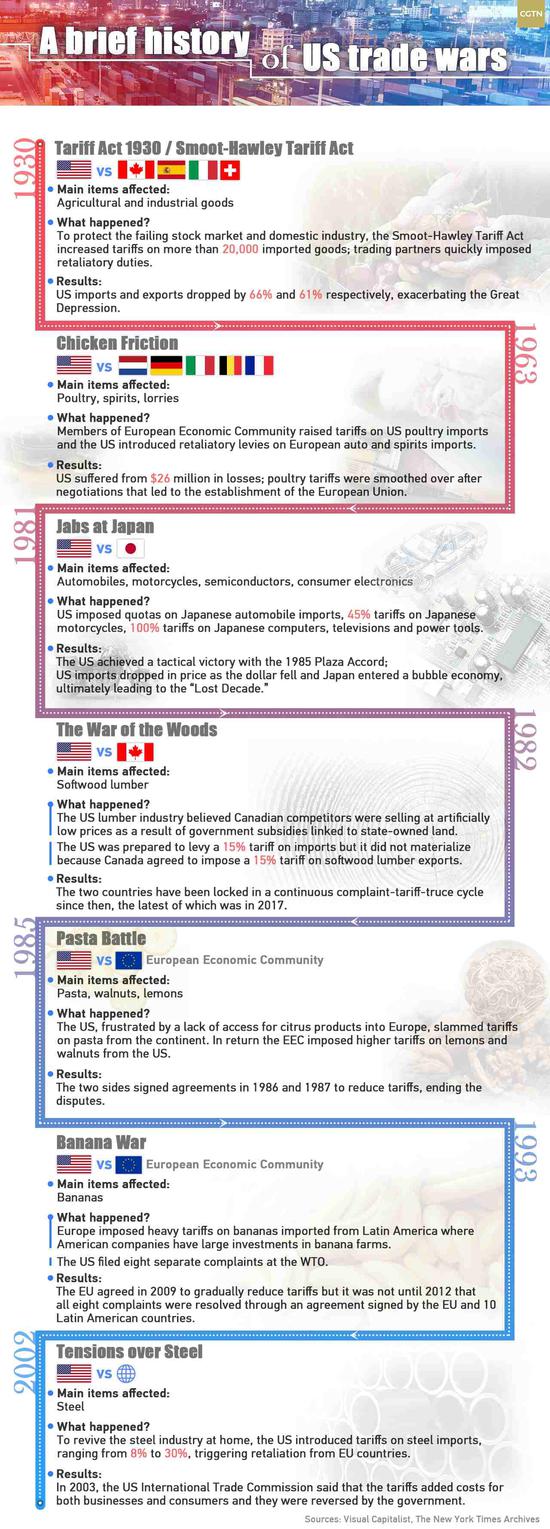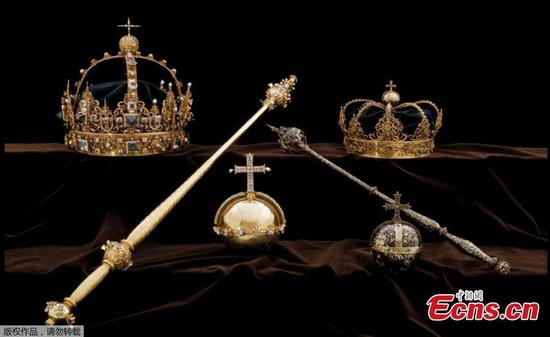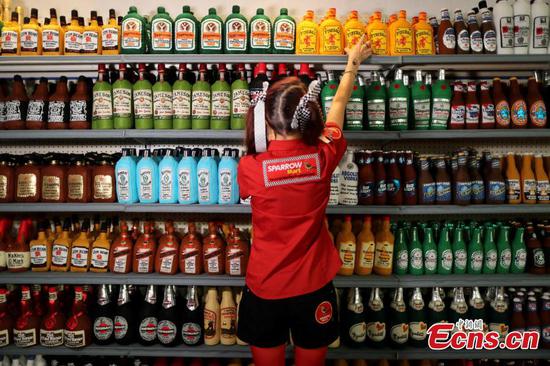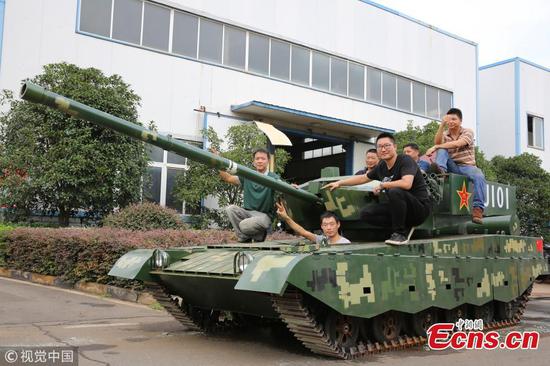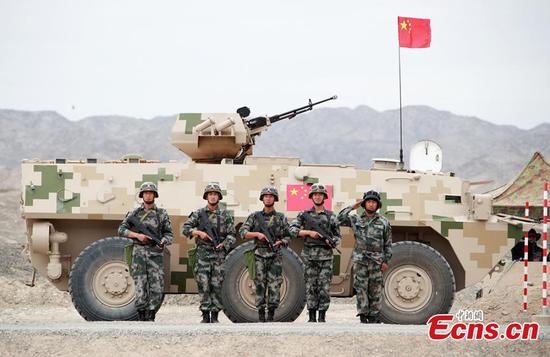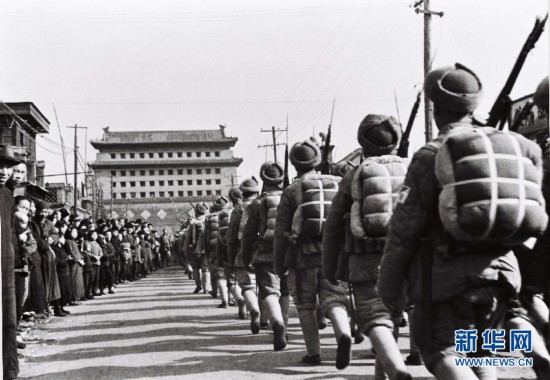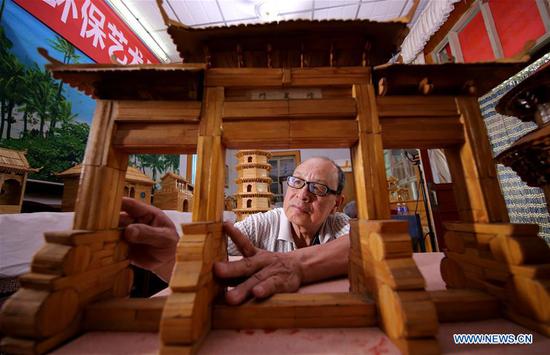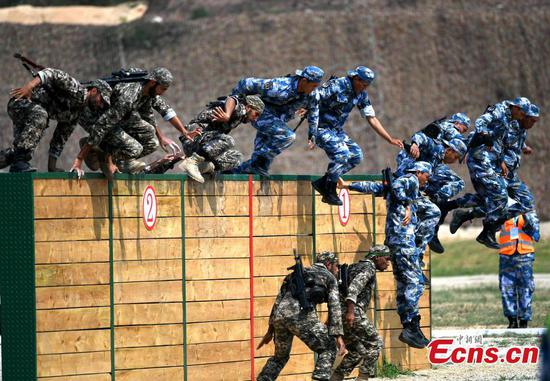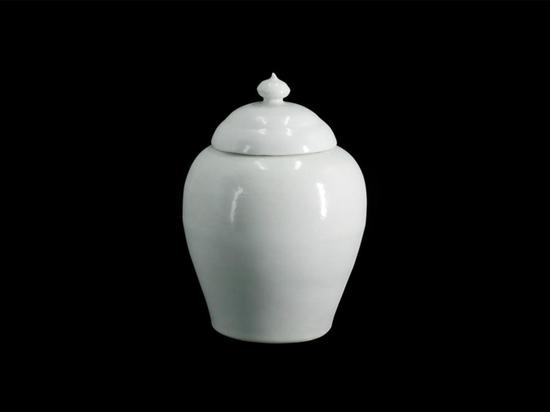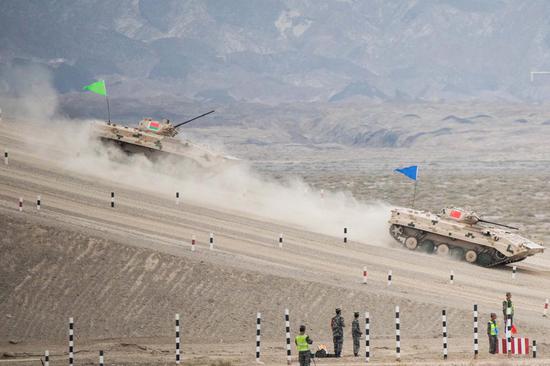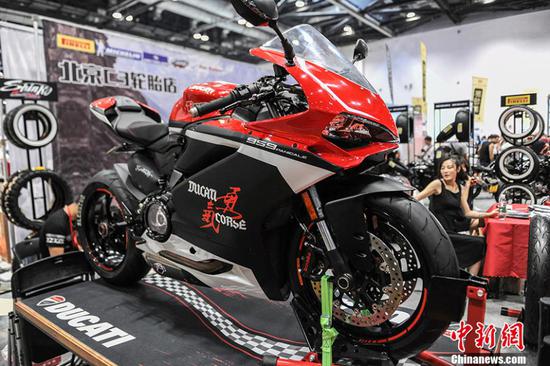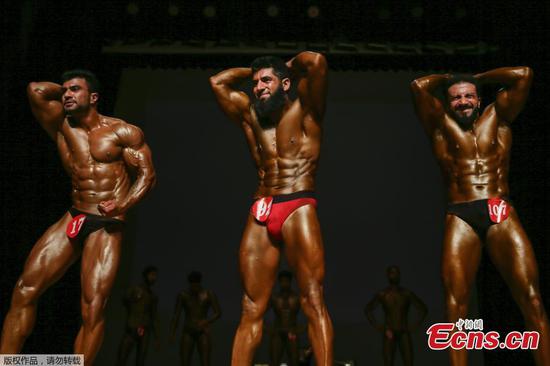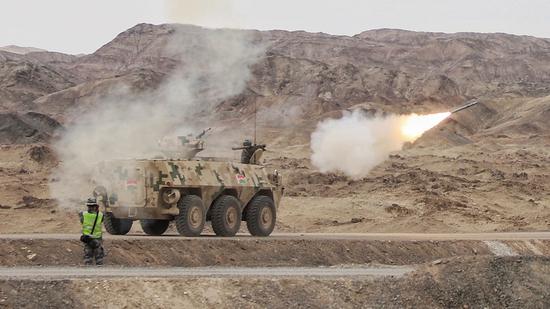U.S. President Donald Trump has stood firm on tariffs, but the country’s track record of trade wars has shown that protectionism always follows the same cycle, starting with the purpose of limiting competition but ending up hurting the economy.
From the Smoot-Hawley Tariff Act as early as 1930 to the steel tariff imposed by former President George W. Bush in 2002, all tariff barriers were set to weaken foreign competitors and support domestic enterprises.
However, the skirmishes usually failed to meet the intended goals but caused retaliatory action from outraged trading partners, often escalating tensions.
For example, after U.S. President Herbert Hoover signed the Smoot-Hawley Tariff Act to protect U.S. industries in 1930, the U.S. reduced its imports in the following years, but soon the retaliation from others led to a 61-percent drop in U.S. exports. And the trade war is believed to have accentuated the Great Depression.
Similarly, in 2002 when U.S. President Bush imposed tariffs on steel in an attempt to revive the industry it had the opposite results.
According to a report released in 2003 by the U.S. International Trade Commission, the tariffs increased the cost of materials, reduced production and eventually caused job losses.
The protectionist skirmishes also failed to benefit the consumers.
After the U.S. introduced a quota on Japanese car imports in 1981, U.S. automakers reduced production to boost car prices for higher profits, leading to extra cost on consumers and less jobs in the industry.
History has shown the lessons of trade war: When governments resort to trade restrictions to fix the economy, it makes all players worse off.
